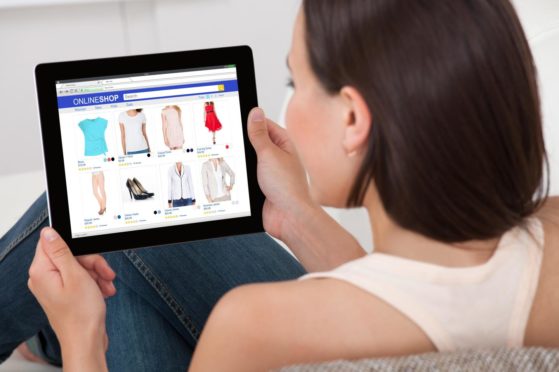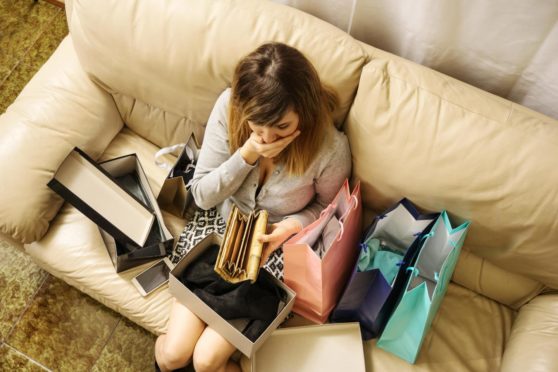It is less than 100 days until Christmas – and already festive aisles are popping up in Tayside’s stores. This is prime shopping season.
Experts say UK online shopping sales rose by 48% in lockdown. Some of that was through need, but others reported it as a way to help relieve stress.
But how can you tell if your love of a bargain or appetite for retail therapy is tipping over into addiction?
1. Spending hours a day scrolling online shops
Accessing a worldwide wardrobe immediately at our fingertips can be handy.
But, say health experts Delamere, for those struggling with shopping addiction it can be extremely detrimental. It has never been easier to feed your shopping habit at the touch of a button.

2. Spending more than you can afford
An addiction can lead to a feeling of lack of control – and this can include the amount we spend. Much like gambling addiction, shopping addiction can have a hugely negative impact on your finances.
Many find themselves dipping into savings, remortgaging homes and even borrowing or stealing from partners/family or friends to fund their addiction.
If you relate to this and feel overwhelmed about what to do next, please reach out for professional help and do not feel afraid of being judged.
3. Feeling a loss of control
For those with an addiction, repeating the unhealthy action can feel like the only way they can regain control of their lives.
Placing an order may feel like they way to be in control for a brief period.
It is important to try to remember this feeling of control will fade again and breaking a cycle like this is important for our mental health.
4. The urge to shop when you feel upset or angry
For ongoing depressive moods or mood swings, experts recommend seeking advice from your healthcare provider – or mental health services who will be able to give you advice on how best to tackle these feelings in a healthier way.
5. Euphoria-type rushes
Do you ever get a feeling of exhilaration and/or anxiety whenever you place an order? If shopping gives you an intense rush this may be a sign of addiction.
Euphoric rushes are caused by surges of the brain chemical dopamine. Much like a drug addiction, the brain will produce less dopamine each time as it gets used to the activity.
However, the body then craves the exhilarating feeling and people may feel they need to increase the amount they spend, or number of orders they place, to get the ‘highs’.
6. A wardrobe full of unworn items
If you find many items you have bought still have their labels on them, it may be time to think about how much you are shopping.

7. Shopping in bed when you should be asleep
Many people with addiction struggle to switch off.
Those with shopping addiction may find themselves more prone to shop in the evening or when they’re in bed with nothing else to do or concentrate on.
If you relate to this try calming exercises, e.g. yoga, before bed to help relax the body.
Turn off your phone or leave it in another room for the night so you are less tempted to reach for it.
Expert tips to curb the urge
• Take your shopping apps off of your phone‘s home screen, or remove them.
• Understand it is not the norm to have the same amount of clothes as influencers. Most of these clothes/items get sent back to the brands.
• If you need motivation to shop less, remember the fewer items we buy, the better for the environment. Consider donating items to charity.
• Do not play things down. Reach out to loved ones who may be able to help – and to mental health professionals.












